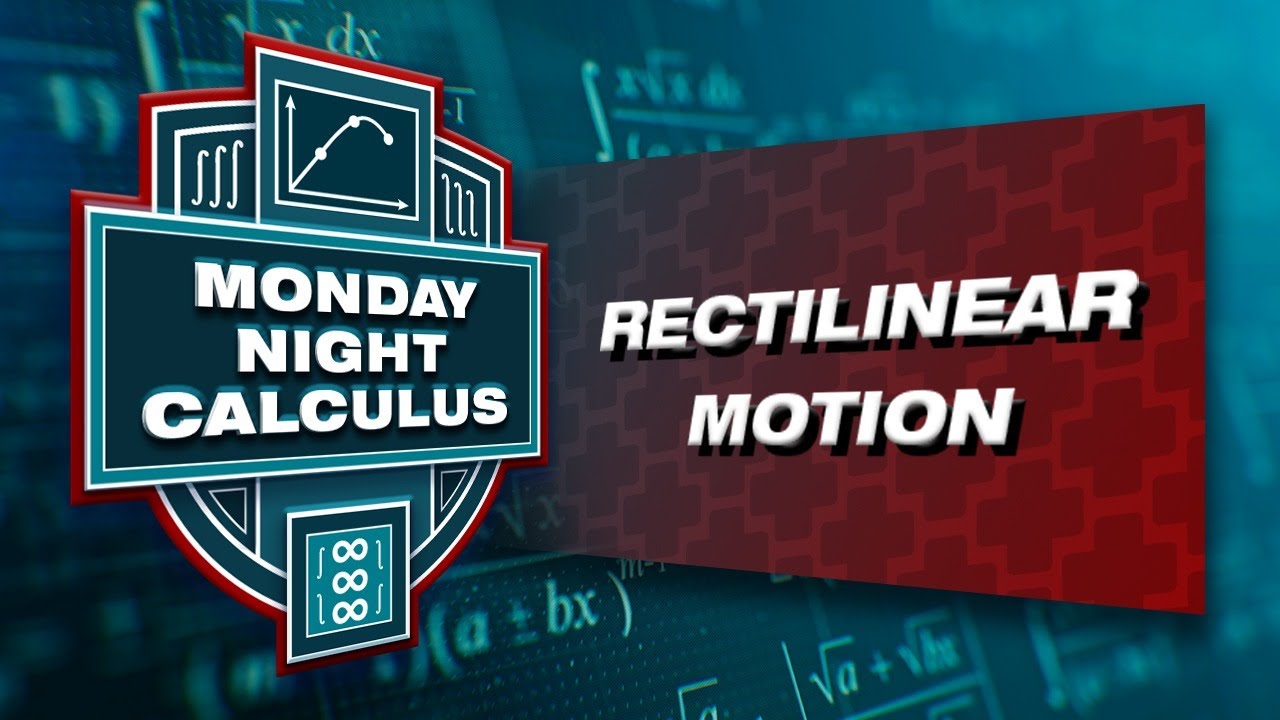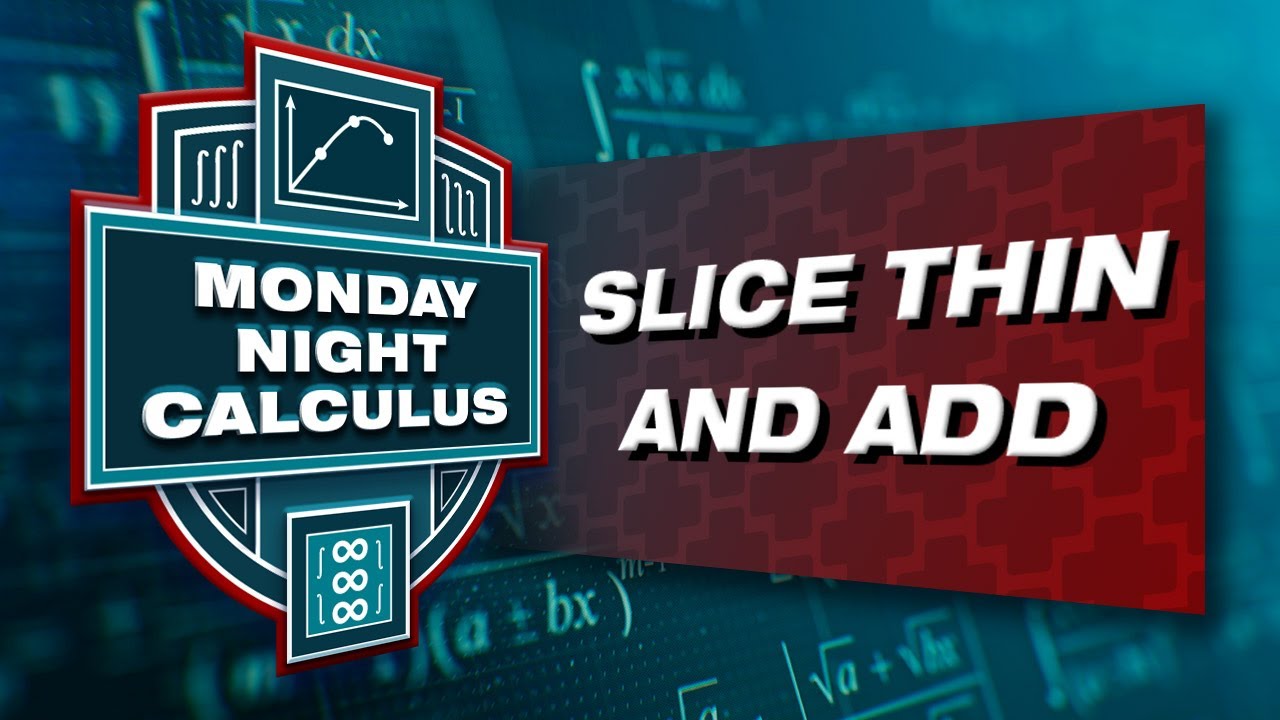Monday Night Calculus: Substitution
TLDRIn this engaging Monday Night Calculus session, Curtis Brown is joined by Steve Kokoska and Tom Dick to explore the method of substitution in calculus. The trio delves into various integral problems, demonstrating how substitution can transform complex integrals into simpler forms. Steve introduces a unique approach to the method of substitution, emphasizing the importance of understanding the technique for both teachers and students. The session also includes discussions on technology tips for visualizing calculus problems and the historical origins of u-substitution. By the end, viewers are left with a deeper understanding of substitution and its applications in solving calculus problems.
Takeaways
- 📚 The session focused on the method of substitution in calculus, emphasizing its importance in problem-solving and integral evaluation.
- 🌟 Curtis, Steve, and Tom led the discussion, highlighting the practical application of substitution with various examples and technology tips.
- 📈 Steve introduced a unique approach to substitution, using an 'extra step' of solving for dx, which aids in understanding the transition from the x-world to the u-world.
- 🔄 The method of substitution involves changing variables to rewrite a problem in a simpler form where it can be more easily solved.
- 🎓 The session was designed for both teachers and students, encouraging students to participate actively and apply the concepts in their classrooms.
- 🔗 A link to the TI Blog was provided, where additional resources, problem sets, and solutions for Monday Night Calculus are available.
- 📝 It was emphasized that practice and 'calculus vision' are essential for effectively choosing the right substitution variable, u, in terms of x.
- 💡 The concept of differentials as variables was discussed, with a focus on their role in linearizing functions and approximating changes along the tangent line.
- 📊 Tom demonstrated the geometric interpretation of linear substitution using a graphing calculator, showing how it affects the interval and function's orientation.
- 📱 The use of technology, such as graphing calculators, was suggested for graphically checking anti-derivatives by comparing the original integrand and its derivative.
- 🎓 The importance of understanding the theoretical concepts behind substitution, such as the chain rule and the relationship between u and x, was stressed for a comprehensive understanding of calculus.
Q & A
What is the main topic of the Monday Night Calculus session in the transcript?
-The main topic of the Monday Night Calculus session is the method of substitution in integral calculus.
Who are the hosts and guests in the Monday Night Calculus session?
-The hosts are Curtis Brown and Steve Kokoska, and the guest is Tom Dick.
What is the purpose of the Monday Night Calculus sessions?
-The sessions are designed not only for teachers but also for students, aiming to provide insights and problem-solving techniques in calculus.
How does Steve Kokoska approach the method of substitution?
-Steve Kokoska approaches the method of substitution by introducing a new variable u and taking the derivative of both sides of the expression, treating d u and dx as variables that can be added, divided, and subtracted.
What is the significance of the differential du in the substitution method?
-The differential du is significant as it represents the infinitesimal change in the variable u, which is crucial in the process of transforming the integral from the x-world to the u-world.
What is the 'bridge' concept introduced in the discussion?
-The 'bridge' concept refers to the intermediate step in the substitution method where the expression is transformed from x's into u's, allowing the problem to be solved in a different 'world' where it might be easier.
How does the choice of u in substitution affect the problem-solving process?
-The choice of u greatly affects the efficiency of solving the integral. A good choice for u is one where the derivative appears in the integrand as a factor, which simplifies the process and makes the integral easier to solve.
What is the importance of checking the answer in anti-differentiation?
-Checking the answer by taking the derivative of the antiderivative and comparing it to the original integrand is important to ensure the correctness of the solution and to understand the relationship between differentiation and anti-differentiation.
What is the role of technology in illustrating the concept of substitution?
-Technology, such as graphing calculators and computer algebra systems, can visually demonstrate the effects of substitution, like stretching or squashing intervals, and help verify the solutions by graphing the antiderivative and the original integrand.
How do the limits of integration change when a linear substitution is made?
-When a linear substitution is made, the limits of integration change according to the transformation. The new limits are calculated by substituting the original limits (a and b) into the linear equation to find the corresponding u-values.
What is the connection between the chain rule and the substitution method?
-The substitution method is associated with the chain rule in differentiation. The chain rule is used to derive the expression for du/dx, which is then used to change variables and solve the integral in the u-world.
Outlines
📚 Introduction to Monday Night Calculus
The video begins with an introduction to the Monday Night Calculus series, hosted by Curtis Brown, Steve Kokoska, and Tom Dick. They express their excitement for the spring series and the topic of substitution. Curtis highlights that the sessions are designed for both teachers and students, and encourages the use of their resources in the classroom. The video aims to provide a comprehensive understanding of the method of substitution in calculus.
🧠 Understanding the Method of Substitution
Steve Kokoska delves into the method of substitution, emphasizing its importance in problem-solving. He introduces the technique with an example integral and explains the process of changing variables to simplify the problem. Steve also discusses the common challenge of choosing the right expression for 'u' in terms of 'x' and shares his approach to building a 'bridge' between the x and u worlds. The paragraph highlights the significance of practice and experience in mastering the technique.
📈 Visualizing Linear Substitution
Tom Dick discusses the geometric interpretation of linear substitution, using technology to illustrate the concept. He explains how a linear substitution like u = mx + p affects the interval and function being integrated. Tom uses a TI-Inspire screen to demonstrate how the function's orientation and scale change with the substitution, providing a visual aid to understand the effects of linear substitution in calculus.
🤔 Addressing Common Questions and Mistakes
The paragraph addresses common questions and potential mistakes in the method of substitution. Steve and Tom discuss the choice of 'u' in terms of 'x' and the importance of practice in making the right choice. They also touch on the concept of different-looking anti-derivatives that are actually the same up to a constant. The speakers emphasize the importance of checking answers and using graphical methods to validate solutions.
🌟 Wrapping Up and Future Sessions
In the concluding paragraph, the hosts wrap up the session and encourage viewers to check out the blog on education.ti.com for more resources and information on future Monday Night Calculus sessions. They provide details on the next live session and remind viewers to look out for solutions to the problem sets. The hosts thank the audience for their participation and wish them a good evening.
Mindmap
Keywords
💡Substitution
💡Integral
💡Differentials
💡Derivative
💡Chain Rule
💡Anti-differentiation
💡Definite Integral
💡Trigonometric Functions
💡Logarithmic Functions
💡Graphical Analysis
Highlights
Introduction to the spring series of Monday Night Calculus with a focus on the topic of substitution.
Emphasis on the method of substitution as a problem-solving technique and its application to both teachers and students.
Discussion on the blog link where previous Monday Night Calculus sessions and problem sets can be accessed.
Steve's unique approach to the method of substitution, introducing the concept of an 'extra step' in solving for dx.
Explanation of the process of variable substitution, including defining a new variable u and taking derivatives with respect to u and x.
Illustration of how to build a 'bridge' between the x world and the u world to transform difficult problems into more manageable ones.
Mention of the importance of practice in mastering the technique of choosing the right expression for u in terms of x.
Demonstration of various integral problems and their solutions using the method of substitution.
Discussion on the potential for mistakes in choosing the substitution variable and how to correct them by trying different substitutions.
Use of technology, specifically the TI-Nspire, to visually represent the concept of linear substitution and its effects on the function and interval.
Tom's explanation of how differentials can be thought of as variables that measure movement along the tangent line of a function.
Steve and Tom's collaboration in presenting the material, offering both theoretical insights and practical applications.
Highlighting the importance of checking answers by taking the derivative of the antiderivative and comparing it to the original integrand.
Suggestion to use graphical analysis to check the validity of the antiderivative by comparing it with the original function.
Mention of the upcoming Monday Night Calculus sessions and the availability of problem sets on the TI education blog.
Discussion on the concept of differentials as the linearization of a function and how they relate to the tangent line at a particular point.
Transcripts
Browse More Related Video

Monday Night Calculus: Rectilinear motion

Monday Night Calculus: Polar equations

Fall 2023 MNC: Slice thin and add - Riemann sums and definite integrals

Monday Night Calculus: Volume

Monday Night Calculus: Strategy for testing series

Fall 2023 MNC: Trick or treat - Some important theorems in differential calculus
5.0 / 5 (0 votes)
Thanks for rating: